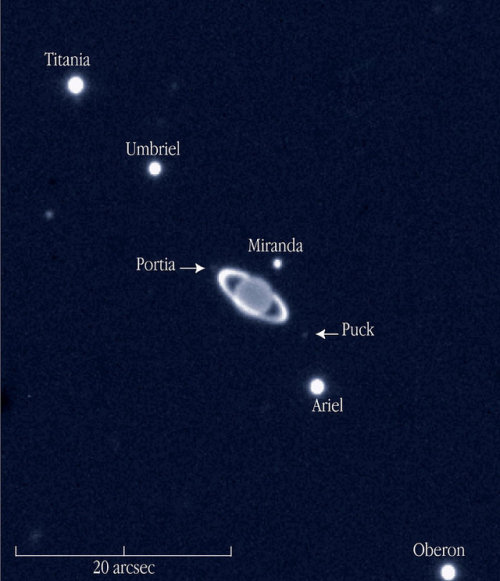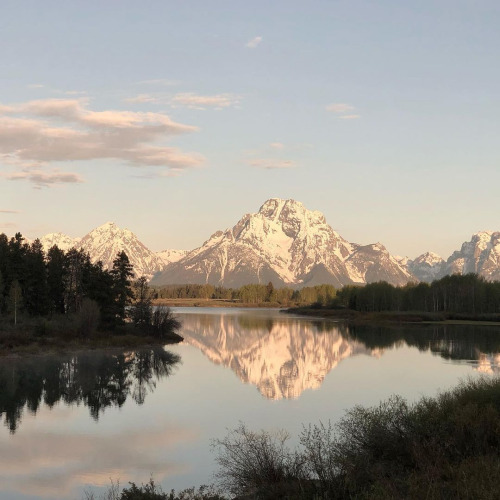Sidusglacies - ⚡️

More Posts from Sidusglacies and Others

A near-infrared view of the giant planet Uranus with rings and some of its moons, obtained on November 19, 2002, with the ISAAC multi-mode instrument on the 8.2-m VLT ANTU telescope at the ESO Paranal Observatory (Chile). The moons are identified; the unidentified, round object to the left is a background star. The image scale in indicated by the bar.
Credit: ESO







Hurricane Florence
Hurricane Florence wide-angle ESA astronaut Alexander Gerst took this image of Hurricane Florence on 12 September 2018, 400 km high from the International Space Station. He commented: “Watch out, America! Hurricane Florence is so enormous, we could only capture her with a super wide angle lens from the International Space Station, 400 km directly above the eye. Get prepared on the East Coast, this is a no-kidding nightmare coming for you.” Alexander is on his second six-month Space Station mission.

the saline water from your mouth | © víctor m. alonso
"Give me the essence of your nights,
give me the saline water from your mouth,"
"Dame la esencia de tus noches,
dame el agua salina de tu boca,"
[© víctor m. alonso | from the poem 'amor']
I would choose you in every life;
time after time, we meet again.
Polar Vortex Disruption Of January 2013
Satellite imagery of the disruption of the polar vortex in the northern hemisphere winter 2012-2013. The data show a major stratospheric sudden warming (SSW) event, linked to the distortion and reversal of the normal westerly (moving west to east) flow of air.
The large vortex (bright) over the North Atlantic Ocean at the start of the clip breaks up into several smaller vortices. This is due to air from lower latitudes (dark) becoming entrained in the polar flow, forming an anti-cyclonic region (dark, rotating clockwise) over Japan and eastern Russia, which disrupts the flow across the region.
Learn More About The Polar Vortex
Although dramatic, such events are not rare, occurring every two years on average. They can cause winds to reverse near the surface too, leading to very cold spells, especially in North America and Europe.
The brightness indicates the potential vorticity of the air, a measure of its rotation within its flow, at an altitude of 35 kilometers. Brighter regions have more vorticity.
A major SSW occurs when the temperatures in the stratosphere around the pole increases by at least 25 Kelvin within a week, causing the wind to change direction.
The data were gathered by the GEOS-5 satellite every hour between 15th December 2012 and 28th January 2013.
© GMAO / GSFC / NASA / Science Source

Grand Teton, Wyoming, photo by Mike Holloman



These beautiful Kelvin-Helmholtz clouds were spotted over Lincolnshire on December 19th. They form between two layers of air, one of which is moving faster than the other. Although that situation is not very unusual, the conditions have to be just right for visible clouds to form at that interface between layers, and the clouds themselves are typically short-lived. This set is particularly lovely with its smooth curves and breaking wave form. If you, like me, love these clouds but never manage to see them yourself, you can always try wearing some instead! (Image credit: A. Towriss; via BBC News; submitted by Vince D.)

What are Trans-Neptunian object?
A trans-Neptunian object (TNO), also written transneptunian object, is any minor planet or dwarf planet in the Solar System that orbits the Sun at a greater average distance than Neptune, which has a semi-major axis of 30.1 astronomical units (AU).
The first trans-Neptunian object to be discovered was Pluto in 1930. It took until 1992 to discover a second trans-Neptunian object orbiting the Sun directly, 15760 Albion. The most massive TNO known is Eris, followed by Pluto, Haumea, Makemake, and Gonggong. source

thought i’d post since it is very truthful!
-
 spirallyxstimmingxmermaid liked this · 3 weeks ago
spirallyxstimmingxmermaid liked this · 3 weeks ago -
 boowoomuu reblogged this · 1 month ago
boowoomuu reblogged this · 1 month ago -
 boowoomuu liked this · 1 month ago
boowoomuu liked this · 1 month ago -
 rrainbowdreamland liked this · 1 month ago
rrainbowdreamland liked this · 1 month ago -
 neckcontour liked this · 3 months ago
neckcontour liked this · 3 months ago -
 trainwreckrenegade reblogged this · 3 months ago
trainwreckrenegade reblogged this · 3 months ago -
 inlovewithu-nicorns liked this · 4 months ago
inlovewithu-nicorns liked this · 4 months ago -
 victoriaaa liked this · 4 months ago
victoriaaa liked this · 4 months ago -
 chicadegustosvariados reblogged this · 5 months ago
chicadegustosvariados reblogged this · 5 months ago -
 somethinginspiringhere reblogged this · 5 months ago
somethinginspiringhere reblogged this · 5 months ago -
 lazardblade6 liked this · 6 months ago
lazardblade6 liked this · 6 months ago -
 nesmithmike liked this · 6 months ago
nesmithmike liked this · 6 months ago -
 shimmer-sodapop reblogged this · 6 months ago
shimmer-sodapop reblogged this · 6 months ago -
 fearandhunger2 liked this · 7 months ago
fearandhunger2 liked this · 7 months ago -
 rainbowire reblogged this · 7 months ago
rainbowire reblogged this · 7 months ago -
 ultramilkshakeblr liked this · 7 months ago
ultramilkshakeblr liked this · 7 months ago -
 leftdance liked this · 7 months ago
leftdance liked this · 7 months ago -
 crimewavee reblogged this · 7 months ago
crimewavee reblogged this · 7 months ago -
 caffeinatedcarny liked this · 7 months ago
caffeinatedcarny liked this · 7 months ago -
 vapormage reblogged this · 7 months ago
vapormage reblogged this · 7 months ago -
 binauralbeatings liked this · 7 months ago
binauralbeatings liked this · 7 months ago -
 higherxthanxclouds reblogged this · 7 months ago
higherxthanxclouds reblogged this · 7 months ago -
 rearslapsdeeprizz reblogged this · 7 months ago
rearslapsdeeprizz reblogged this · 7 months ago -
 rearslapsdeeprizz liked this · 7 months ago
rearslapsdeeprizz liked this · 7 months ago -
 strecnyna reblogged this · 7 months ago
strecnyna reblogged this · 7 months ago -
 thebluecallsme liked this · 9 months ago
thebluecallsme liked this · 9 months ago -
 sacredbloominglotus888 reblogged this · 9 months ago
sacredbloominglotus888 reblogged this · 9 months ago -
 n-imbus reblogged this · 9 months ago
n-imbus reblogged this · 9 months ago -
 laur-kay liked this · 9 months ago
laur-kay liked this · 9 months ago -
 ginnyjuicee liked this · 10 months ago
ginnyjuicee liked this · 10 months ago -
 pixieblo0d reblogged this · 10 months ago
pixieblo0d reblogged this · 10 months ago -
 thedollisdead reblogged this · 10 months ago
thedollisdead reblogged this · 10 months ago -
 thedollisdead liked this · 10 months ago
thedollisdead liked this · 10 months ago -
 c3lestite reblogged this · 10 months ago
c3lestite reblogged this · 10 months ago -
 avatareve liked this · 10 months ago
avatareve liked this · 10 months ago -
 diowinedad reblogged this · 10 months ago
diowinedad reblogged this · 10 months ago -
 diowinedad liked this · 10 months ago
diowinedad liked this · 10 months ago -
 liquid-luv reblogged this · 10 months ago
liquid-luv reblogged this · 10 months ago -
 sanglant666 liked this · 11 months ago
sanglant666 liked this · 11 months ago -
 harringtonwinchester liked this · 11 months ago
harringtonwinchester liked this · 11 months ago -
 elektrostantsiya liked this · 11 months ago
elektrostantsiya liked this · 11 months ago -
 desertshor reblogged this · 1 year ago
desertshor reblogged this · 1 year ago -
 milkymirror liked this · 1 year ago
milkymirror liked this · 1 year ago -
 bhonn4eus liked this · 1 year ago
bhonn4eus liked this · 1 year ago
